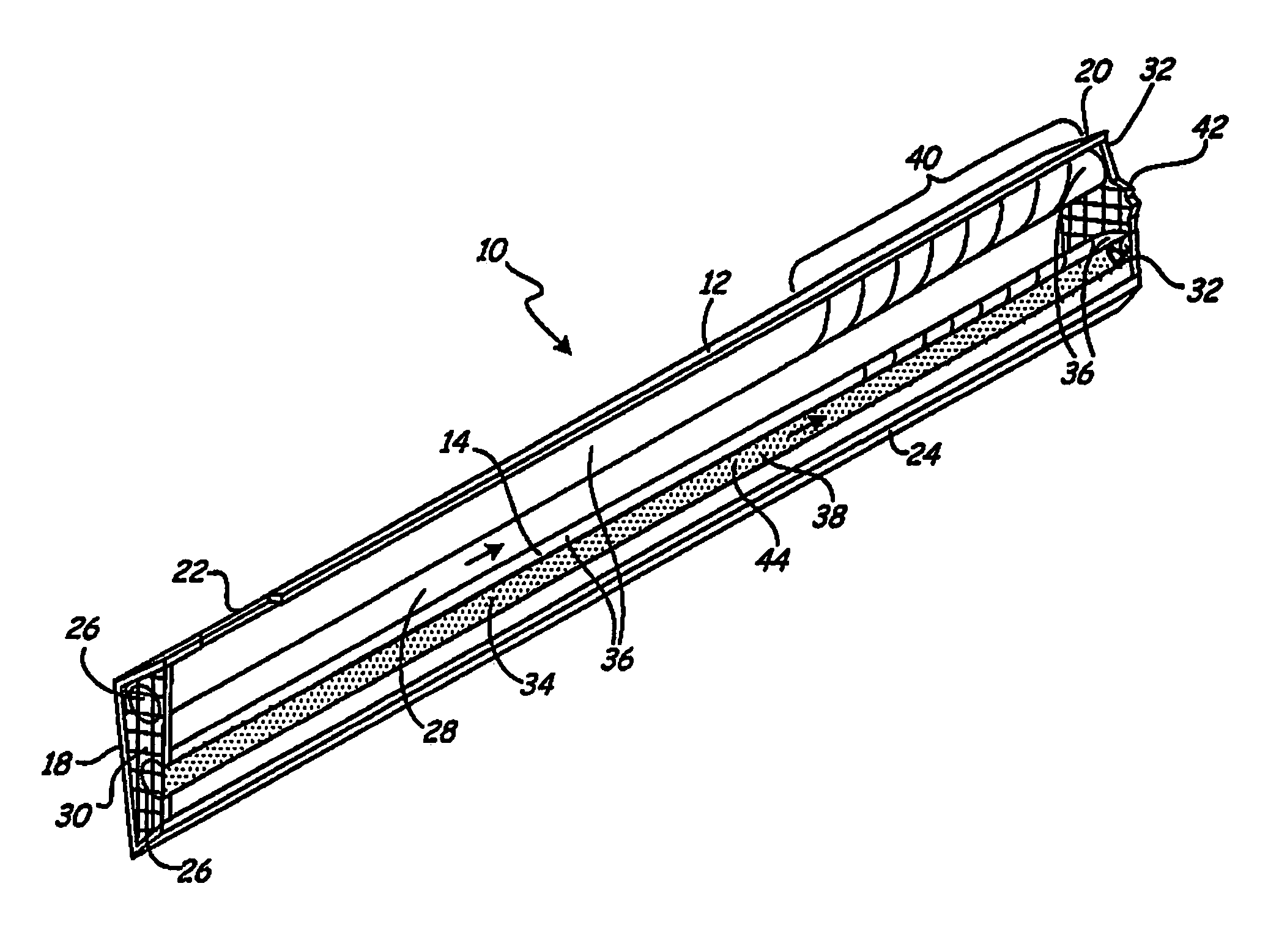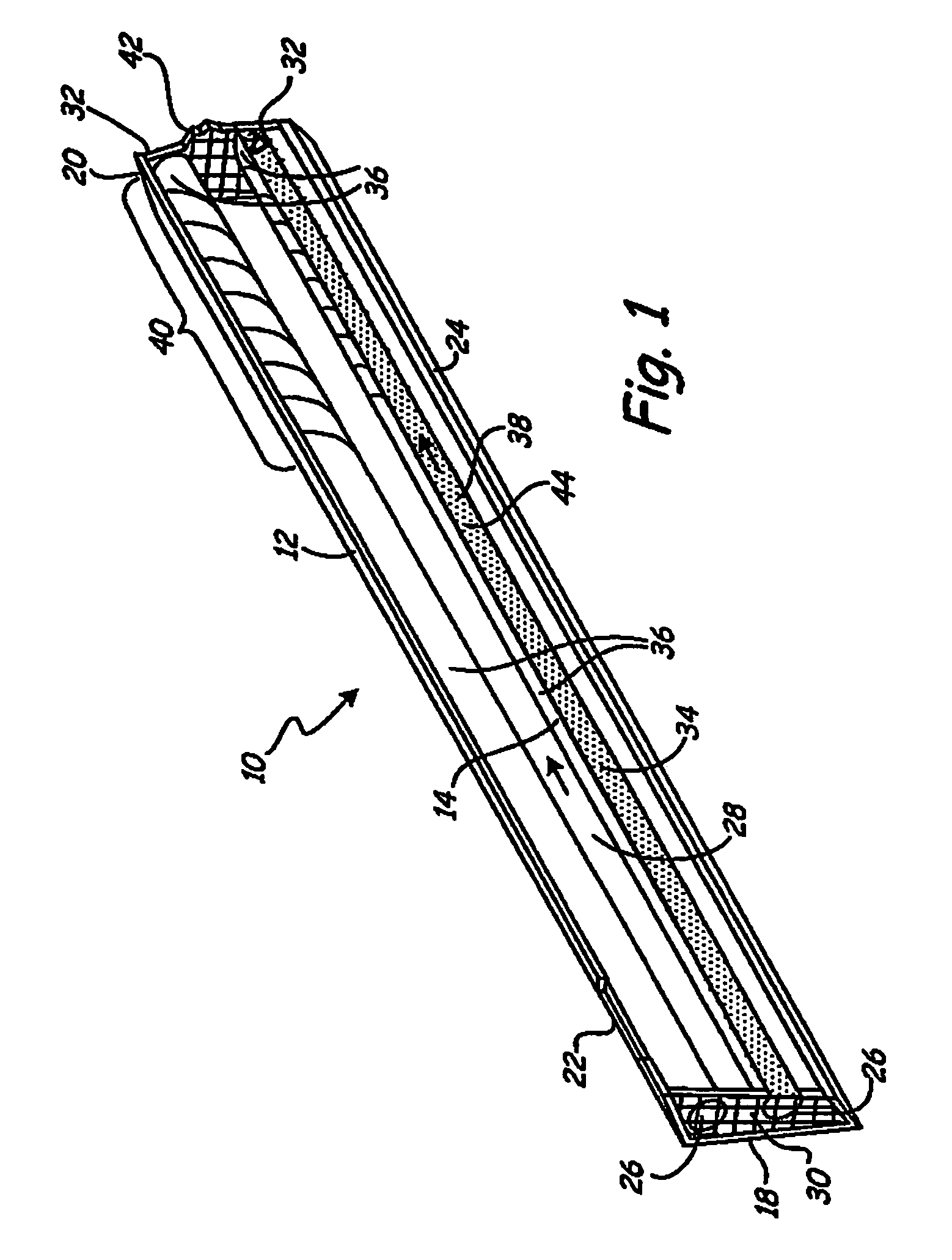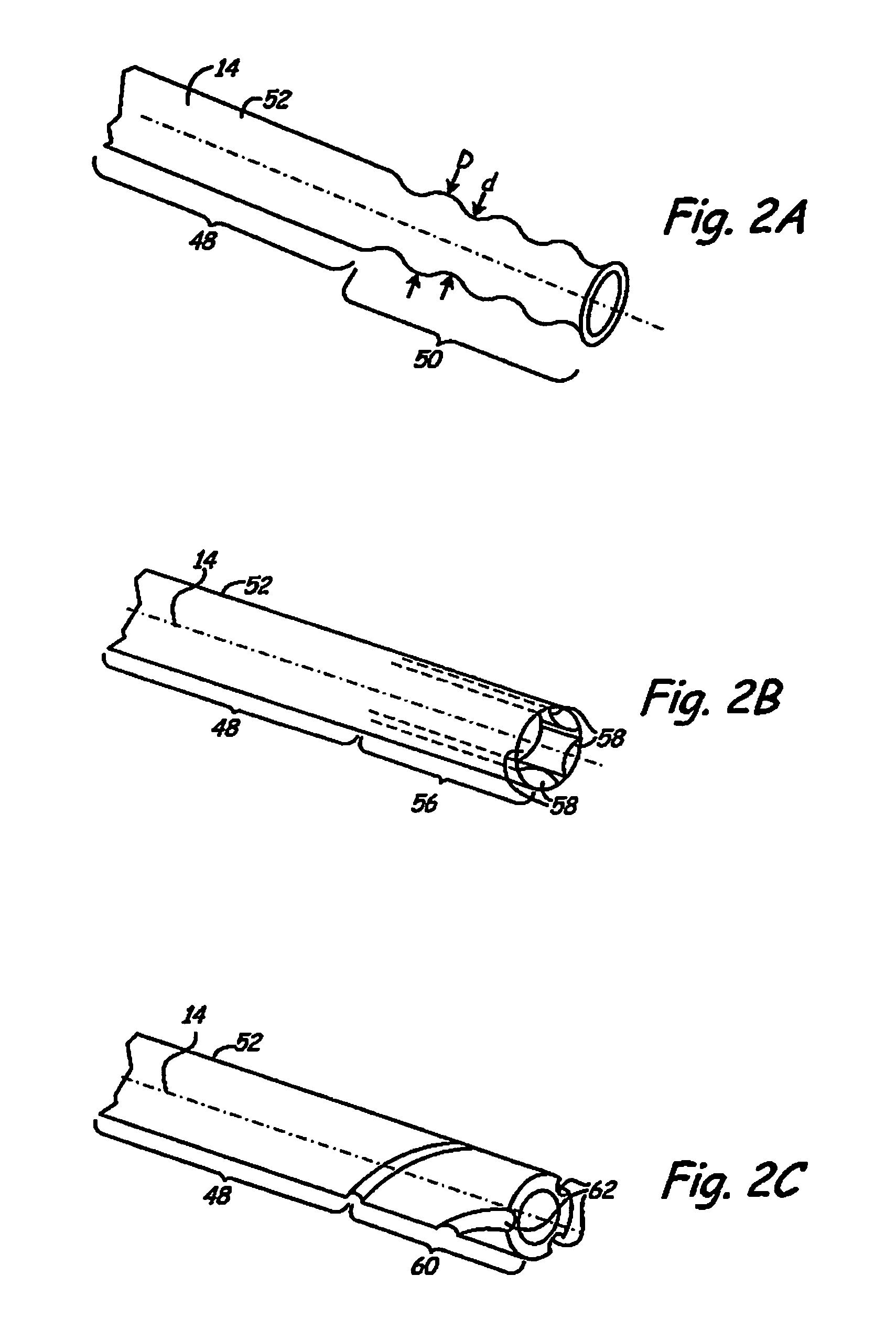Catalytic reactor with swirl
a catalytic reactor and swirl technology, applied in physical/chemical process catalysts, lighting and heating apparatus, separation processes, etc., can solve the problems of smog, acid rain, depletion of stratospheric ozone, etc., to improve the combustion of catalytic fuel, promote fluid flow turbulence, and improve the current design of catalytic reactors
- Summary
- Abstract
- Description
- Claims
- Application Information
AI Technical Summary
Benefits of technology
Problems solved by technology
Method used
Image
Examples
Embodiment Construction
[0023]FIG. 1 depicts a longitudinal cross-section of catalytic reactor 10, which includes housing 12 and catalyst tubes 14. Catalytic reactor 10 may be integrated with a gas turbine combustion system (not illustrated). In this embodiment, housing 12 contains an entrance 18 and an exit 20. Housing 12 contains at least one aperture 22 for introducing an additional fluid into housing 12. A wall 24 of housing 12 and exterior surface 36 of catalyst tubes 14 create a fluid flow path 28 from the entrance 18 or aperture 22 to the exit 20. Entrance 18 comprises a grate 30 connected to wall 24 of housing 12. Grate 24 secures catalyst tubes 14 in place within the housing 12, while allowing for the introduction of fluids into catalyst tubes 14 and flow path 28. Grate 30 and wall 24 of housing 12 are constructed from metal or other material system suited for the application. Exit 20 allows fluids flowing within flow path 28 to exit the housing 12.
[0024]Catalyst tubes 14 are made from a heat cond...
PUM
| Property | Measurement | Unit |
|---|---|---|
| length | aaaaa | aaaaa |
| velocity | aaaaa | aaaaa |
| area | aaaaa | aaaaa |
Abstract
Description
Claims
Application Information
 Login to View More
Login to View More - R&D
- Intellectual Property
- Life Sciences
- Materials
- Tech Scout
- Unparalleled Data Quality
- Higher Quality Content
- 60% Fewer Hallucinations
Browse by: Latest US Patents, China's latest patents, Technical Efficacy Thesaurus, Application Domain, Technology Topic, Popular Technical Reports.
© 2025 PatSnap. All rights reserved.Legal|Privacy policy|Modern Slavery Act Transparency Statement|Sitemap|About US| Contact US: help@patsnap.com



